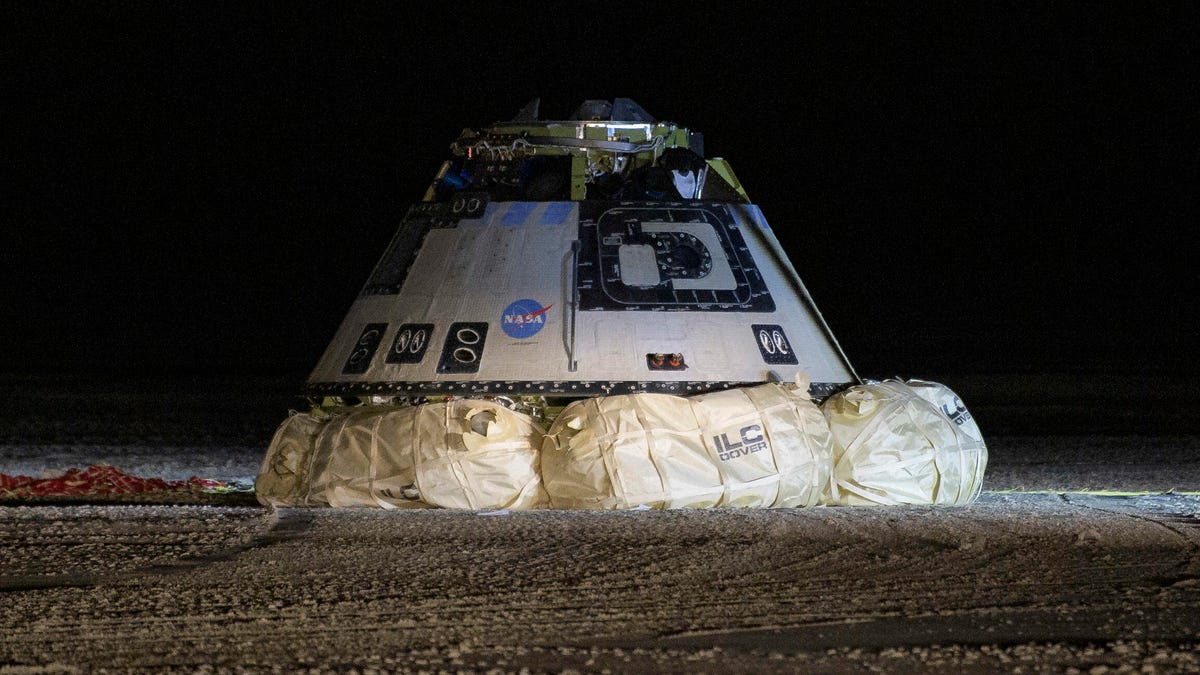NASA and Boeing reveal what kept Starliner from reaching the space station
Ground crew had to step in to keep the spacecraft from being lost during a test flight that missed the mark.

The CST-100 Starliner lands back on US soil, airbags full.
Software defects and problems with a communications link prevented the Boeing CST-100 Starliner from reaching the International Space Station during its first orbital test flight in December.
That's the preliminary conclusion of an ongoing joint NASA and Boeing investigation. A statement from NASA on Friday summed up three issues that kept the spacecraft from reaching its planned orbit, instead landing in the New Mexico desert two days later:
- An error with the Mission Elapsed Timer, which incorrectly polled time from the Atlas V booster nearly 11 hours prior to launch.
- A software issue within the Service Module Disposal Sequence, which incorrectly translated the SM disposal sequence into the SM Integrated Propulsion Controller.
- An Intermittent Space-to-Ground forward link issue, which impeded the flight control team's ability to command and control the vehicle.
In plain English, two software bugs and a communications dropout kept Starliner from reaching its destination.
The investigation is still ongoing in regard to the cause of the communications issue, though John Mulholland, Starliner program manager, told reporters Thursday "noise" from frequencies associated with cell phone towers may be involved.
NASA and Boeing are continuing their follow-up analysis to determine if the first two issues were the result of flawed code or some sort of user or system error in applying the software.
In a meeting Wednesday, NASA's Aerospace Safety Advisory Panel called for a review of a number of Boeing's testing processes. The company quickly issued a statement committing to apply the panel's recommendations.
The investigation also found that the problems were not detected through pre-flight safety checks.
"Software defects, particularly in complex spacecraft code, are not unexpected," the NASA statement reads. "However, there were numerous instances where the Boeing software quality processes either should have or could have uncovered the defects."
During Starliner's truncated flight in December, crew on the ground had to intervene to avoid losing the spacecraft.
Jim Chilton, Boeing Space and Launch senior vice president, told reporters Thursday that the intervention prevented Starliner's service module and crew module from bumping into each other again after separation, which could have sent the spacecraft tumbling out of control, or worse.
"Nothing good can come from the two spacecraft bumping back into each other," Chilton said.
The joint team says it has already established a list of priority corrective actions, but is continuing to investigate before releasing more detailed findings at the end of February. In the meantime, it remains unclear when Starliner could fly again.

